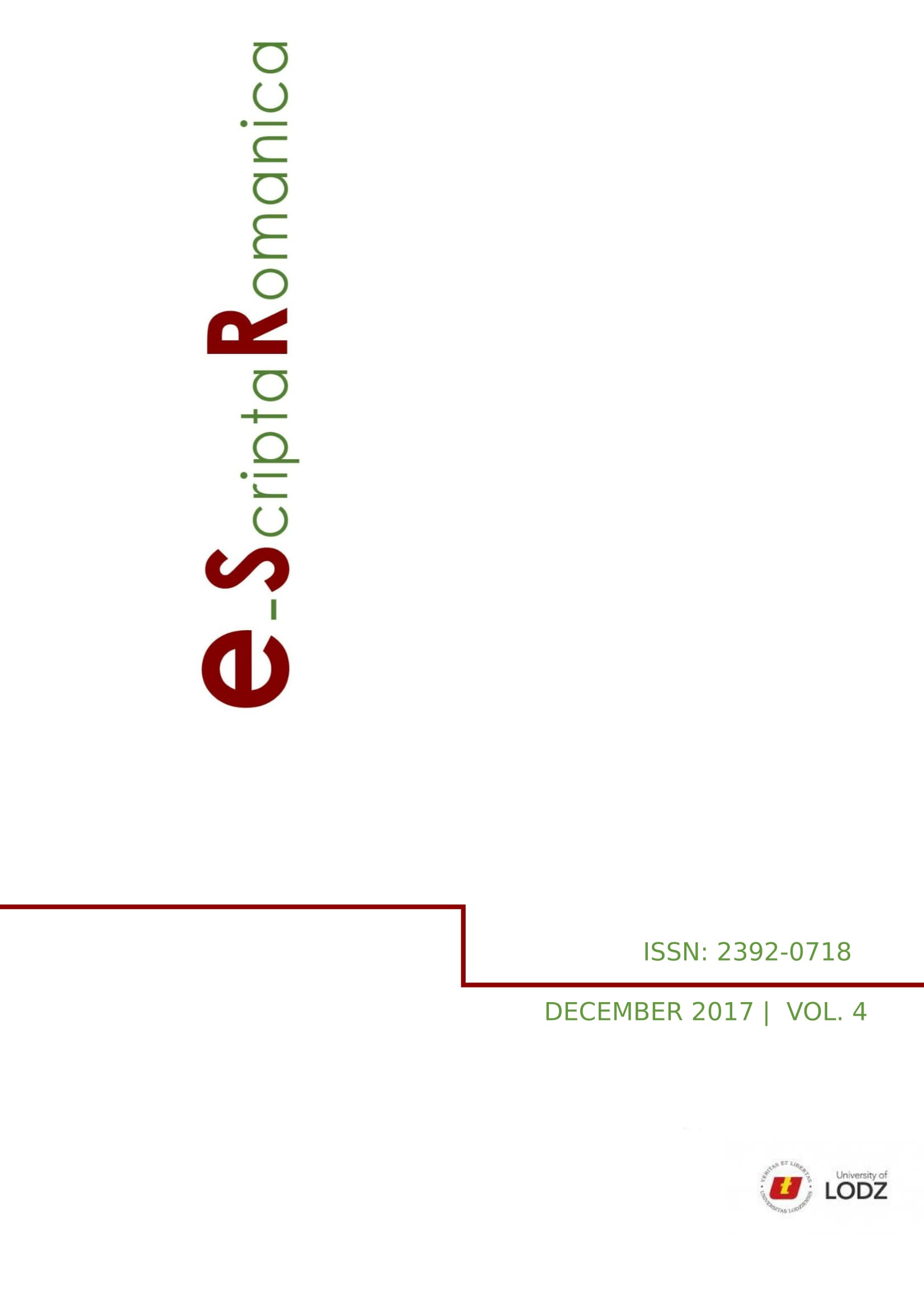Neología e identidad lingüística en el español de México
DOI:
https://doi.org/10.18778/2392-0718.04.10Palabras clave:
neología, formación de palabras, productividad, identidad lingüísticaResumen
Desde un punto de vista onomasiológico, el proceso de acuñación de nuevas palabras está determinado por aspectos socioculturales e identitarios de las comunidades lingüísticas (Štekauer 2005; Körtvélyessy y Štekauer 2014). En el desarrollo de una cultura, la creación de léxico secundario está estrechamente relacionada con el devenir histórico y social de los pueblos. No debe sorprender que en las variedades dialectales de la lengua española puedan encontrarse distintas preferencias en la selección de los esquemas de formación de palabras utilizados para nombrar el mundo. En este artículo, analizaremos los procesos lexicogenésicos del español de México y mostraremos que algunos son propios de esta variedad del español y reflejan aspectos actuales de su sociedad y su cultura. Recurriremos al corpus neológico Morfolex (Zacarías, 2016c), que recopila neologismos formados en México en la última década. Se describirán brevemente los procesos de recolección y clasificación de neologismos y los criterios de productividad que permiten reconocer los esquemas de formación de palabras favoritos. Finalmente, se mostrará que entre los esquemas formativos más productivos y que identifican la variante mexicana se encuentran los sufijos azo, iza, erío; el elemento compositivo narco; las palabras compuestas de nombre y adjetivo, y los cruces léxicos.
Citas
CABRÉ, T. (2011): “La neología y los neologismos: Reflexiones teóricas y cuestiones aplicadas”. De la lengua por sólo la extrañeza. Estudios de lexicología, norma lingüística, historia y literatura en homenaje a Luis Fernando Lara. M. VÁZQUEZ, K. ZIMMERMANN y F. SEGOVIA (eds.). México: El Colegio de México, pp. 465-487.
Google Scholar
CABRÉ, T. (2016): “Principios y parámetros en una teoría de neologismos”. La neología en las lenguas románicas. Recursos, estrategias y nuevas orientaciones. J. GARCÍA, G. DE STERCK, D. LINDER, N. MAROTO, M. SÁNCHEZ, y J. TORRES DEL REY (eds.). Frankfurt: Peter Lang, pp. 27-42.
Google Scholar
CABRÉ, T., M. BAYÁ et al. (2002): “Evaluación de la vitalidad de una lengua a través de la neología: a propósito de la neología espontánea y de la neología planificada”. Lèxic i Neologia. T. CABRÉ, J. FREIXÁ y E. SOLÉ (eds.). Barcelona: Observatori de Neologia. Institut Universitari de Lingüística Aplicada, Universitat Pompeu Fabra, pp. 159-201.
Google Scholar
CORTÉS, O. (2011): “Formación de palabras y paronomasia”. Lingüística Mexicana 6/1, pp. 37-63.
Google Scholar
FUENTES, M., C. GERDING et al (2009): “Neología léxica: Reflejo de la vitalidad del español de Chile”. Revista de Lingüística Teórica y Aplicada, 47/ 1, pp. 103-124.
Google Scholar
HALLIDAY, M.A.K. (2001): El lenguaje como semiótica social. La interpretación social del lenguaje y el significado. Buenos Aires: Fondo de Cultura Económica.
Google Scholar
KÖRTVÉLYESSY, L. & P. ŠTEKAUER (2014): “Derivation in Social Context”. The Oxford Handbook of Derivational Morphology. R. LIEBER Y P. STEKAUER (eds.). Oxford/New York: Oxford University Press, pp. 407-423.
Google Scholar
LLANOS, L. & M. VILLAYANDRE (2017): “‘Gordibuenas’ y ‘peliteñidos’: la productividad del esquema adjetivo/sustantivo + adjetivo con vocal de enlace en la formación de neologismos”. La renovación léxica en las lenguas románicas: proyectos y perspectivas. M. SÁNCHEZ, N. MAROTO, G. DE STERCK, J. TORRES DEL REY, D. LINDER, y J. GARCÍA (eds.). Murcia: Editum, 433-444.
Google Scholar
MORENO DE ALBA, J. (2013): Notas de gramática dialectal. El Atlas Lingüístico de México. México: UNAM.
Google Scholar
RAMOS, E. (2000): “Elementos Léxicos y Construcción de Identidad en el español de Venezuela”. Fermentum. Revista Venezolana de Sociología y Antropología, 10/29, pp. 421-432.
Google Scholar
REAL ACADEMIA ESPAÑOLA Y ASOCIACIÓN DE ACADEMIAS DE LA LENGUA ESPAÑOLA (2009): Nueva gramática de la lengua española. México: ESPASA. (NGLE)
Google Scholar
REAL ACADEMIA ESPAÑOLA Y ASOCIACIÓN DE ACADEMIAS DE LA LENGUA ESPAÑOLA (2014): Diccionario de la lengua española. México: ESPASA. (DLA)
Google Scholar
SAUCEDO, H. (2011): “Polisemia en la formación de palabras. El caso de la parasíntesis en en- -ar del tipo enlatar”. Lingüística Mexicana, 6, 1, pp. 81-98.
Google Scholar
SCHMID, H. (2011): English Morphology and Word-Formation. An Introduction. Berlín: Schmidt Verlag.
Google Scholar
ŠTEKAUER, P. (2005): “Onomasiological approach to word-formation”. Handbook of Word-Formation. P. ŠTEKAUER Y R. LIEBER (eds.). Dordrecht: Springer, pp. 207-232.
Google Scholar
ŠTEKAUER, P., S. VARELA & L. KORTVÉLYESSY (2012): Word-Formation in the World’s Languages: A Typological Survey. Cambridge: Cambridge University Press.
Google Scholar
YAÑEZ, F. (2014): Prensa y neologismos: La naturaleza adaptativa y creativa del léxico. Tesis doctoral. Madrid: Universidad Nacional de Educación a Distancia.
Google Scholar
ZACARÍAS, R. (2015): “Análisis morfológico y semántico del sufijo -iza y sus implicaciones lexicográficas”. Signo y Seña, 27, pp. 247-266.
Google Scholar
ZACARÍAS, R. (2016a): “Rivalidad entre esquemas de formación de palabras”. Publicaciones del Centro de Lingüística Hispánica Juan M. Lope Blanch, 62. México: UNAM.
Google Scholar
ZACARÍAS, R. (2016b): “Análisis morfológico, semántico y lexicográfico del sufijo -erío en el español de México”. Thesaurus. Revista del Instituto Caro y Cuervo, 58, pp. 30-52.
Google Scholar
ZACARÍAS, R. (2016c): “Morfología léxica en el español actual de México: neología y productividad”. Estudios de Lingüística Aplicada, 34/64, pp. 11-31.
Google Scholar
Descargas
Publicado
Cómo citar
Número
Sección
Licencia

Esta obra está bajo una licencia internacional Creative Commons Atribución-NoComercial-SinDerivadas 4.0.











